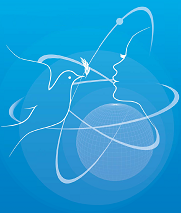Speaker
Natalia Semioshkina
(Germany)
Description
According to Wikipedia Radioecology is a branch of ecology, which studies how radioactive substances interact with nature; how different mechanisms affect the substances' migration and uptake in food chains and ecosystems. Investigations in radioecology might include aspects of field sampling, designed field and laboratory experiments and the development of predictive simulation models. This science combines techniques from some of the more basic, traditional fields, such as physics, chemistry, mathematics, biology, and ecology, with applied concepts in radiation protection. Radioecological studies form the basis for estimating doses and assessing the consequences of radioactive pollution for human health and the environment.
Significant economic and social disruptions arise after radioactive contamination of land as a result of releases of radioactivity into the environment be it from accidents, routine and war operations or during decommissioning and waste management of nuclear facilities. Measures carried out to reduce and minimise radiation doses to the public can give rise to even more concerns as often they are not understood and the stakeholders are often not involved into the decision making process. Countermeasures are needed to reduce population exposure, at the same time minimising economic and social costs. The effectiveness of countermeasures is not only highly dependent on factors which are connected to environmental transfer, but also to special behaviour and consumption behaviours in varying food production systems.
A central aspect of radioecology is the identification of vulnerable areas which, by virtue of the processes governing the transfer of radiocaesium through food chains, deliver high individual, or collective doses to man. Social factors (e.g. dietary preferences) and agricultural production techniques also contribute to vulnerability.
| Country or International Organization | Germany |
|---|
Primary author
Natalia Semioshkina
(Germany)
Co-authors
Dr
Gabriele Voigt
(r.e.m.)
Dr
Irene Fiedler
(r.e.m.)

